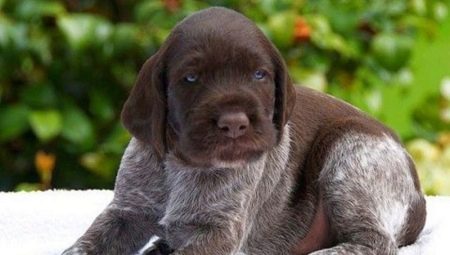German drathaar is appreciated by dog breeders around the world. The dog belongs to the class of hunters, it has a lot of advantages and a very original appearance. The material in this article will be of interest to those who want to get to know this animal better.
Perhaps this will help the reader to assess their chances as an owner and reflect on whether a person will be able to give this animal everything he needs due to natural features.
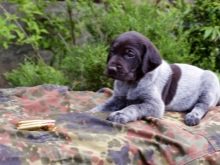
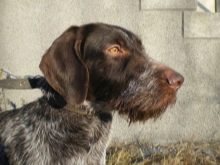
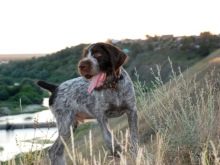
History
The history of the origin of dogs is controversial and has been vigorously discussed to this day. However, regardless of opinions, Germany is considered the birthplace of hunting drathaars. Since ancient times, hunting dogs were bred in this country, whose qualitative characteristics were famous all over the world. However, due to the narrow specialization, German breeders had to think about breeding dogs of a universal type. The task of the breeders was to raise animals for hunting, which at the same time had all the best characteristics of dogs of other breeds known at that time.
At the turn of the XIX-XX centuries, work with genetic material was carried out especially actively. For crossing, we used a poodle-pointer, shtikhelhaar, as well as a griffon. It was from these dogs that the first drathaaras appeared. Breeders tried to bring such dogs that would be able to cope with various tasks, in addition to hunting. And therefore, in breeding used the gene material and local dogs.
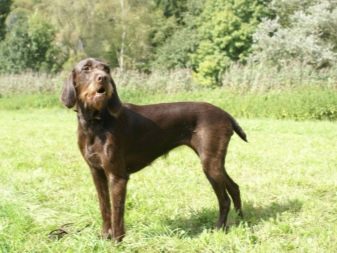
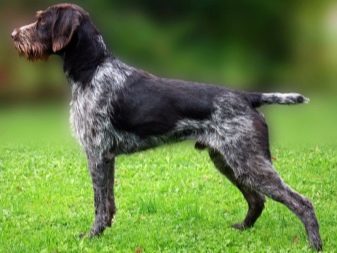
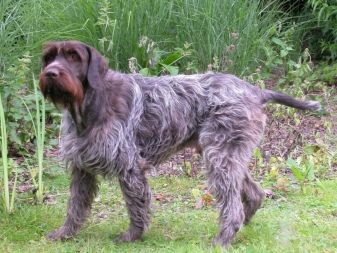
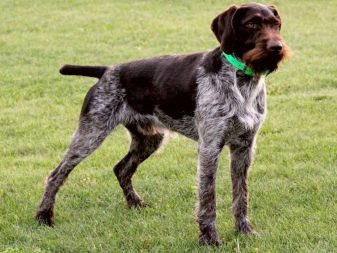
Gradually, the appearance of hunting dogs began to change. His aesthetic indicators improved, animals acquired a certain elegance. Along with this, their hunting qualities and sense of smell have improved.Nevertheless, the breeders did not stop there, because at that time the dogs could not work for a long time in the water, the reason for which was a short coat. The hunters wanted their pets to be better protected not only from water, but also from difficult terrain.
Thus began the crossbreeding of the Kurzhaars with wire-haired dogs. There was an improvement in breeding approximately between 1850-1860. As for the griffons, it is not known for certain which species of these animals was used to improve the dignity of the animals. According to one opinion, these were the Cortals griffins.
The formation of breed features was completed in 1870. At this time, the drathaars were already distinguished by a characteristic hard type of coat. This wool cover perfectly protected animals not only from weather and insects, but also saved from prickly branches and helped to work in the water. Each puppy passed a rigorous selection by working ability and character.
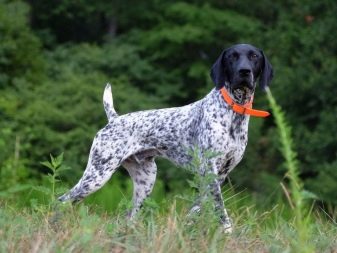

Drathaara showed themselves excellently in hunting for wild boars and hares. They were famous, like shepherd dogs, because they coped with livestock grazing. In addition, they could be security guards and search engines. And yet, despite their universality, their path to universal recognition was not swift.
At the end of the 19th century, the fashion for dog shows came to Germany. At this time, the country was under the rise of nationalism and was united, and therefore, the standardization of animals began to attach special importance. Each breeder tried to breed the best dogs, people began to keep pedigree books, which led to the formal recognition of the drathaars.
Very quickly, German hunting dogs gained popularity in Europe and already in 1920 came to the United States. However, at first, the Americans did not take the Drathars to their true worth, since they did not believe that the dog could be universal.
Over time, their erroneous opinion dissipated, and therefore the popularity of animals began to increase. Today, these pets are bought not only for hunting: modern breeders like them for their companionable qualities.
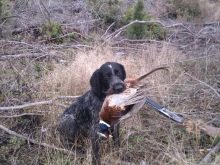
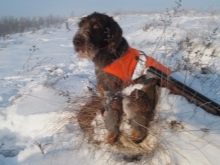
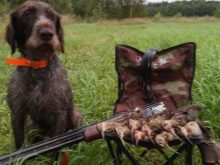
Description
Drathaar refers to hardy and strong animals, as evidenced by its developed and toned physique. A dog with diverse capabilities has a rather attractive appearance. The weight of an individual representative of the breed in average is from 23 to 32 kg, and females weigh less. Males are larger, their growth at the withers varies from 61 to 68 cm, while the sizes of bitches are smaller, their growth at the withers is from 57 to 64 cm.
These dogs usually live 12-14 years, but under certain conditions, this period may increase slightly. If the dog is not provided with proper care, its life expectancy may be reduced. This may depend on various factors, including proper nutrition, regularity of walks, the systematics of preventive examinations, as well as hygiene and the detection of diseases at an early stage.
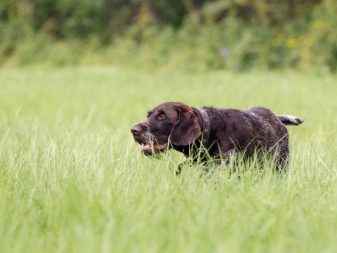
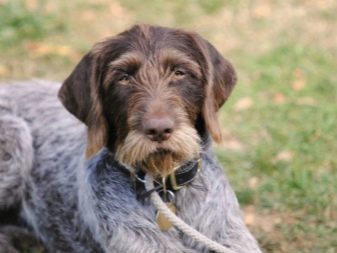
The appearance of the drathaar is memorable: the representative of this breed has a so-called beard, giving it a certain amount of brutality. Such dogs have a strict, almost military bearing, an original face, due to which the dog seems too serious. In addition to a rare beard, a dog can have a mustache, which many of his breeds of other breeds do not have.
The composition of the German cops is average, the constitution is slightly dried, and these dogs are not prone to obesity. The maximum that they can afford is to gain a couple of extra pounds. Their movements are powerful, sweeping, but at the same time not devoid of smoothness and harmony. The key point of the standard is the fact that their oblique body length is almost comparable with the height at the withers. At the same time, it is allowed that the length be higher than growth by 3 cm.
The shape of the head of the Drathaars is wedge-shaped and proportional to both sex and the growth of an individual animal.The muzzle is somewhat lowered, the skull is flattened, moderately wide, rounded on the sides.
Cheekbones pronounced, as well as the transition from the forehead to the muzzle. The muzzle itself at first glance seems elongated, not without massiveness.
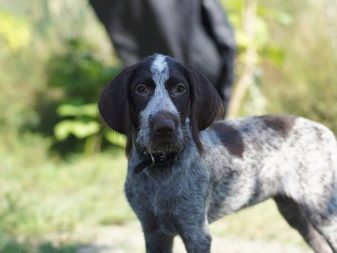
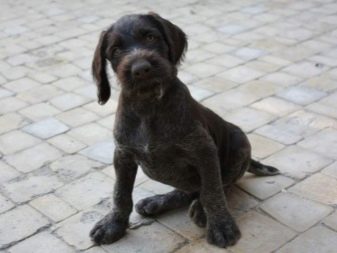
Drathaar lips are thick with a snug fit, they have sufficient pigmentation, taking into account the coloring of the shirt. The bite in these animals is scissor-like, the dental formula is complete and consists of 42 teeth. The hitch is vertical without gaps. The ears are proportional to the body, wide, but not twisted.
The neck is long and dry, but at the same time muscular, has a small arch. The eyes of purebred Germans are not too deep set, they are devoid of bulge, are characterized by a snug fit and pigmentation of the eyelids. The darker they are, the better. The nose with wide nostrils is usually painted in any of the colors characteristic of dogs of this breed.
The body of the body of the drathaars is slightly stretched, may have a sloping back. In this case, the lower back of a purebred dog is strong and muscular. The croup is wide, has a slight slope.
The sternum is broad, distributed in breadth, the withers are noticeable, stand out well. Below the body there is a noticeable curved line, which is explained by the selected abdomen and the tightness of the groin area.
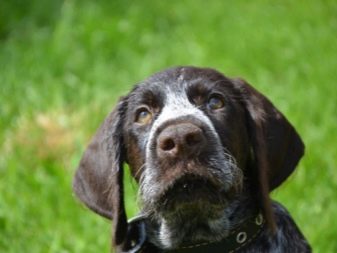
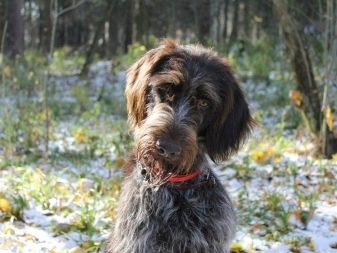
The Drathaaram is characterized by a sufficient forward reach and a powerful push of the hind legs. The setting of the front and hind legs is parallel, the posture is proud. The skin of these dogs is tight-fitting, has no folds. As for the coat, its structure is wire-like. Moreover, this breed is not only coarse-haired: the cops of this species do not suffer from water at all, since they have a waterproof undercoat.
The length of the covering hair in different dogs can vary from 2 to 4 cm. The fur coat does not hide the muscularity of the body, and due to its stiffness and density, the animal is not afraid of either bad weather or possible mechanical damage. Down on the paws of the dog’s hair, the dog’s shorter and thicker, but not softer. As for the characteristic beard, this hair is not long, but the toughest.
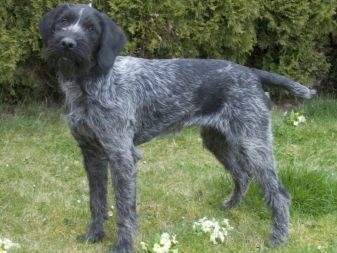
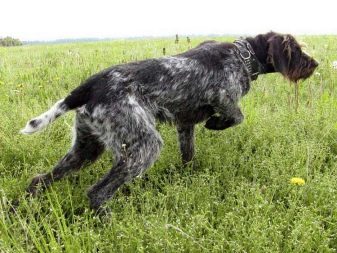
The color of the animal may be different. For example, in addition to brown-speckled with and without points, it can be black with specks. Moreover, in this case, the color may or may not have characteristic spots. In addition to these colors, nature can give the German Pointing Dog a brownish color, which can be not only monophonic, but also with a mark on the sternum.
Individual representatives of the breed can be painted in a rare speck, in which the main background is white, and the marks themselves can be black or brown. Other colors are not included in the standard and are subject to disqualification.
Also disadvantages, among other vicious characteristics of drathaars, are considered to be such defects as a weak bite, rare coat, high-mantle, rare undercoat.
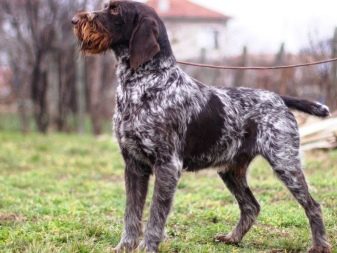
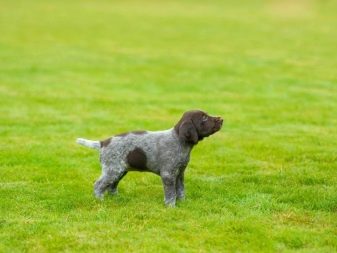
Character
Despite the fact that dogs are considered hunting and hounds, they are distinguished by a balanced character. They are extremely smart and loyal to their masters. Therefore, they can become good friends or even partners, which significantly expands the circle of their breeders. Dogs can implicitly obey not only one owner: individual representatives of the breed obey all household members.
However, it would be wrong to call these dogs universal today, because their hunting qualities often hit over the edge. Due to their excellent instinct and other characteristics, these dogs are used for work in the Ministry of Emergencies. In addition, they can be called assistants for drug control, artists in the circus. More of these dogs are excellent watchmen.
Dogs from childhood are characterized by activity and a positive attitude. The movement is their life credo, as well as the need for work. In addition to the fact that these animals are not afraid of water, they do not get wet and are not afraid of the cold temperature.
Breeders managed to breed a dog breed that can hunt waterfowl, which is important for hunting owners.Pets do not lose their excitement from childhood, and therefore their enthusiasm is quickly transmitted to all family members.
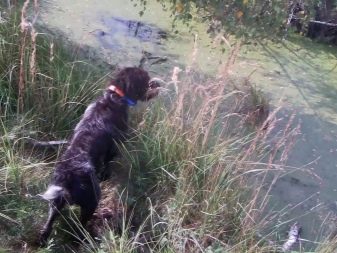

It is very difficult to remain indifferent to these funny bearded men. In difficult times they are able to support, and on occasion they will try to extend the owner to the game, in addition, they are happy to demonstrate their tenderness and affection to the owners. However, at the right moment, the dogs quickly navigate the situation and move on to protection, showing the best protective qualities and courage.
In the same time these dogs are not initially aggressive towards strangers. They behave with strangers wary, but this cannot be said when the dog sees his relatives. Here he is able to show a lot of his emotions and feelings. At the same time, Drathaar can communicate with other pets in a very friendly manner.
A purebred German can live both in an apartment and in a private house.
However, practice shows that the dog that constantly walks in the fresh air, combining walks with adequate physical exertion, will be stronger. Without them, the animal weakens and is forced to seek a way out of its energy in other ways.
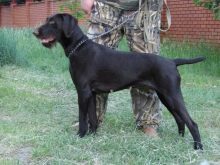
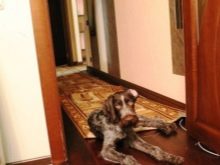
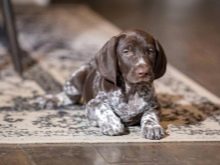
In no case should the drathaara be restricted in movement. Even walking with a German Pointing Dog should be special. For example, a dog with pleasure can accompany the owner on a bike ride or a regular sports run. Based on this, it becomes clear that the drathaar breeder must also be active and sporty.
Besides, his best qualities for a dog will be organization, responsibility and will. With such an owner, the dog is always ready to run and even swim. Moreover, the animal perceives such walks with special excitement, because the pet loves competitions. And therefore, activity and responsiveness to any job must be used in education and training.
Unlike many brethren of the canine drathaar family, it stands out not only with intelligence and ingenuity, but also with endurance and patience.
He will not spin under his feet, asking for anything from the owners or hastening the owner for a walk. The dog knows its worth, but it converges with a person quickly enough. He has an excellent memory that can be used in training.
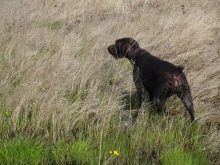
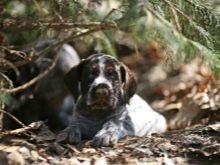
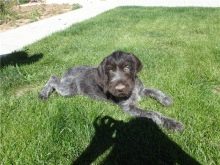
The animal’s hearing and sense of smell are so honed that when hunting this dog is able to easily find wounded prey hiding in an inaccessible place. After finding it, the dog always informs the owner of its find. As for the relationship with the master's children, in most cases, the drathaars show the qualities of experienced nannies. However, animals rarely allow children to sit, because they literally crave outdoor games. In winter, dogs can ride the kids on a sled.
As for individual pets living with drathaaras, in small rodents and birds, cops see potential prey. Regardless of upbringing, sooner or later the dog will hunt them. If he lives in a private house, he will very quickly destroy not only rats, but also mice (if any). This neighborhood is unacceptable for these dogs.
Among other qualities of a dog, it is worth noting intolerance to loneliness.
In addition to the fact that the animal can miss its beloved owners, some representatives of the breed, in the absence of owners, can turn their attention to the household furniture or other items of their choice. Without constant contact with the owner, the dog does not imagine its existence. Moreover, she will not survive in an aviary, especially if the owner will approach her only occasionally to feed.
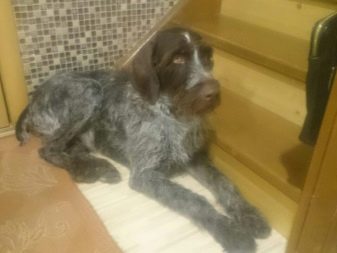
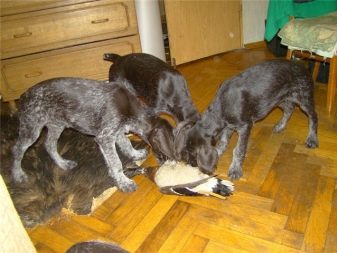
Advantages and disadvantages
Like any other animal, the drathaars have their own advantages and disadvantages. Among the pluses, one can note their ability to penetrate into various inaccessible places, which their relatives of other breeds lack. Compared to other dogs, these dogs can hunt in any weather without hiding from rain or wind.They are noiseless on the hunt and during training are able to collect game by gesture or by the whistle of the owner.
Besides, as the reviews of the owners show, drathaars almost always return from hunting with prey. They actively respond to the call to the game and often allow children to "saddle" themselves. A separate category for these dogs is drunk people: the mind of the dog is enough not to show aggression to a person. In relation to tipsy people, drathaaras prefer not to attack, but to push them off with their paws.
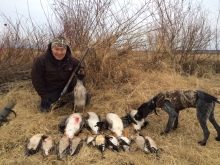
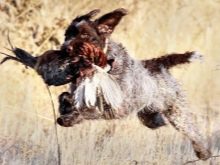
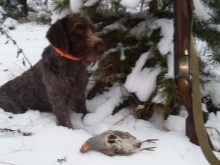
Advantages include security features. Strangers prefers not to let Drathaar into the house, if there is no approval from the owner. The dog will growl at strangers, he will get up to warn them, but shows teeth and aggression only as a last resort. Another advantage of a dog is its ability to hunt not only in the warm season, but also in winter. Snowdrifts will not become an obstacle for him if the owner is going to hunt.
Their indispensable advantage is the ability to cope not only with small prey. If necessary, these animals can hunt together with the owner not only for the bird, but also for the large beast. However, if the breeder is not particularly attached to the pet and shifts his training from day to day, the dog has every chance of growing up as a stupid, prone to prankishness.
As for the dog’s ability to make independent decisions, this quality can be attributed to both pluses and minuses.
For example, this is very good during hunting, but training an individual stubborn person can cause the owner a lot of trouble and trouble. Sometimes in communication with children, the dog actively supports their proposal to play pranks, which can lead to pogroms or disorder.
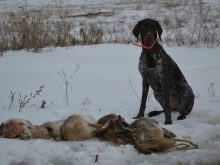
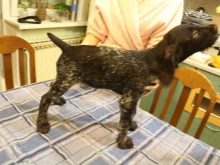
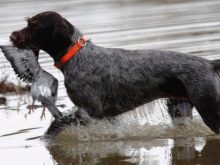
In the absence of training, the animal may behave indifferent to cats. In some cases, in the absence of other prey, he can drive the cat. If the puppy is socialized early, this problem usually does not arise. A negative point is jealousy, which the animal can show in relation to the owner. If other dogs or cats live in the house, it may seem to individual drathaars that those pets get more attention.
Among other shortcomings can be identified and a tendency to shoots from rare representatives of this breed. This is explained not so much by a poor attitude on the part of the owner, as by his inattention to the needs of the pet. A dog needs fresh emotions and sensations, without suffering, it suffers. A dog that feels lonely can nibble on shoes and spoil household items.
However, the formation of his character takes place during training and education, and therefore any healthy and strong-willed person can grow a real friend from a pet. As for health, these dogs have a predisposition to certain hereditary diseases.
For example, they often have hip dysplasia, diabetes, and hypothyroidism. Among other common ailments that are characteristic of dogs of this breed, problems such as aortic stenosis, melanoma, and cataracts can be noted.
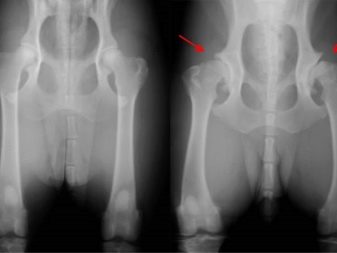
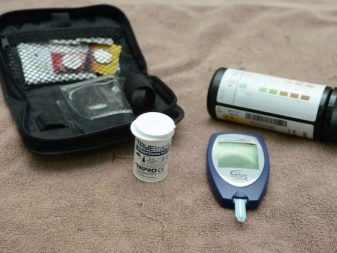
The main differences from other dogs
Drathaar has its differences from other brethren of the canine family. For example, if we compare with the Kurzhaar, these dogs are both point dogs. However, the coat at Drathaar is longer, in addition, the Kurzhaar freezes in winter, despite the density of its fur coat. The differences between these dogs lie in the behavior: the Kurzhaar is more frivolous and not so aggressive towards the beast. In some ways, he is even more friendly.
The muzzle of the drathaars has a beard, while it is covered with fine hair among their brethren. If we compare the sizes of dogs of two breeds, then they are almost the same, but outwardly the drathaaras seem larger.Another difference is the degree of simplicity of training: it is easier to learn and raise a kurzhaar, since representatives of this breed do not question the relevance of any team uttered by the owner. As for the nature of the mestizo, the dogs are similar in need of realizing their own energy. They constantly need to move, they are full of excitement and crave adventure. However, the Kurzhaars are prone to dog fighting.
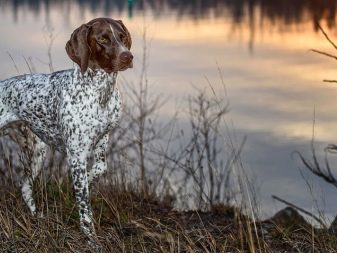
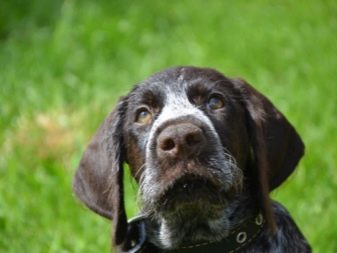
If we compare drathaar with a like, then the breeders have different opinions. Both that and other dog is considered universal. However, by virtue of practice, any animal can be trained for a certain type of game. Huskies are good for hunting fur animals, moose, wild boar, bear and game birds. However, they cope better with medium-sized prey.
The owner should choose the dog based on what exactly he is going to hunt. Therefore, it would be wrong to call any animal better or worse. Experienced breeders believe that the flair for both dogs is excellent, but they prey on different prey, which explains the key selection criteria. Both the like and the drathaar silently pursue the prey, and when it is discovered the like gives a voice, the drathaar takes a stand awaiting the owner's command.
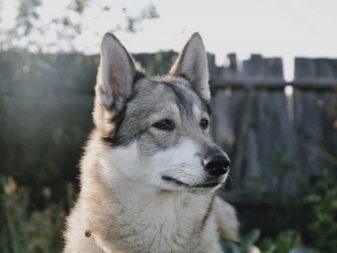
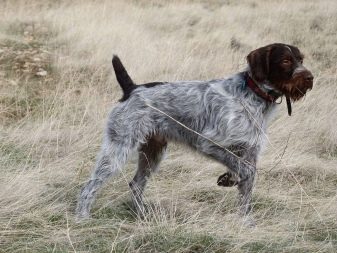
Convinced fans of drathaar think he is better. If a dog is dragged to a large beast, upon its discovery it gives a voice to the owner, attracting his attention. Some types of huskies are used as sled dogs. However, if drathaaru needs daily training with physical activity, the like does not need daily exercise. But living in an apartment is difficult for her, and in addition, she does not prey on a badger and a fox.
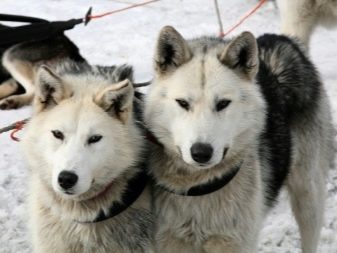
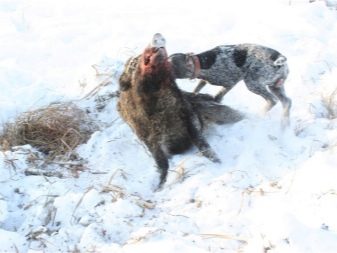
As for the differences between the drathaar and the spaniel, there are some nuances here. According to the breeders, hunting with a spaniel is different from the behavior of a dog. Spaniels do not always work with a stance, while a German in hunting is more universal. He works both on the bird and on the beast, but without direct contact with large dangerous animals.
Some spaniels do not bring game, others find it in the bushes and give it to the owner. Others fix the wounded animal paws to the ground, but do not finish. According to the owners-hunters, spaniels often raise their prey on the move, and with barking.
They can also accompany the hunter with barking all the time, while the drathaar does not allow itself to create unnecessary noise. He moves quietly, not frightening the prey, correlating his work with the commands of the owner.
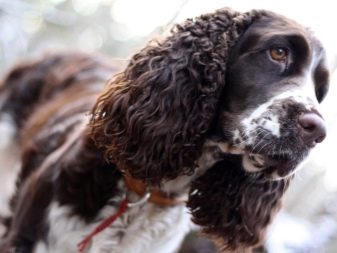
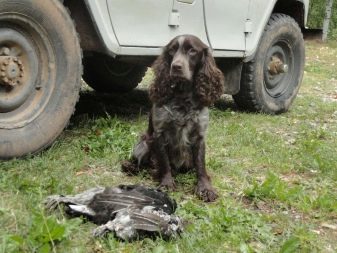
Popular nicknames
The choice of nicknames for a pet must be approached thoroughly. Not every nickname that dog breeders use today will correspond to the character and appearance of this dog. The first thing to consider is the fact that the name should not be long. Animals quickly remember short nicknames, and it’s enough that the nickname consists of two (maximum three) syllables. At the same time, the nickname should not be soft, sounding like a cat.
On information portals today, breeders are offered a huge number of options for nicknames for dogs, but, unfortunately, not all of them are worthy of choice. For example, from the list of possible options, you should immediately remove the insulting nicknames such as Gryaznul, Damn, Gryazka, Bes, Shaitan, Khmyr, Rakshas (a demon among the Indians). Color should not be perceived as something dirty and inappropriate.
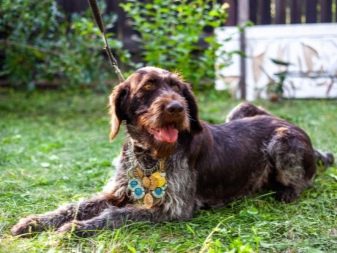
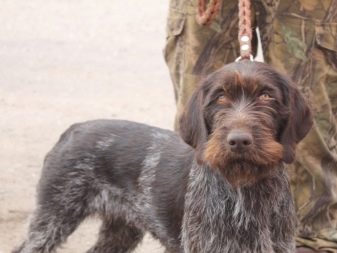
It’s easy to see what name a dog can pick up by looking at it. Options such as Demon, Rolf, Macr do not go well for him, while the nicknames Gray, Graf will be quite appropriate. Excluded options for the names of family members or friends, as well as nicknames for team names. Do not call a thoroughbred animal such nicknames as Sharik, Polkan, Chuk, Huck.
Also, do not give them cat nicknames (for example, Fluff, Marsik, Barsik), including those ending in "ks" (Max, Zeus, Marx), because a consonant nickname will cause the dog to pay attention when someone calls the cat.And even more so, you do not need to call the dog Apollo, Sultan, Chubais, Ermak, Mephistopheles, Obama, Trump or any other political (historical) figure.
Drathaaru-boy is suitable for such nicknames as Archie, Spike, Tucker, Toby, Lloyd, Chester, Zack, Jack, Fry, Luke. The nicknames Ron, Vinc, Georges, Hike, Cooper, Diego, Rain, Tao are no less relevant.


As for the drathaar girls, there are also some nuances here. For example, it is not worth giving a dog silly nicknames such as Gavka, Shavka, Chakka, Moska, Masya, Tosya, Zita, Dusya, Lucy. Surely the owner would not like it if his parents called him Fool or Obormot. Choosing a nickname, you need to take into account the status of the dog, and therefore the name should sound beautiful, sonorous.
For example, a girl can be called Jess (Jesse), Zara, Richie, Chasey, Roxy, Remy, Rhonda, Sophie, Chloe. In addition, nicknames Emma, Terra, Trace, Sheila, Grett are good options. If you want sonority and status, you can choose a name, shortened from the long one indicated in the pedigree.
You should not associate nicknames with hunting (for example, such options as Excitement and Attack are completely sonic). Nicknames Shelley, Salma, Caro are quite euphonic.
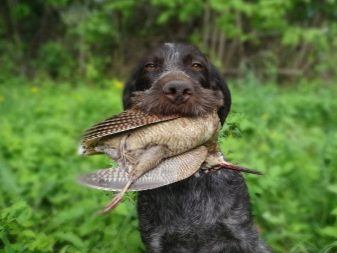
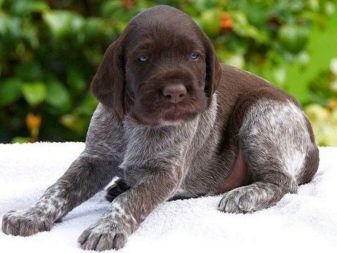
Conditions for keeping
To throw out dog energy, the pet must be walked at least twice a day on the street. The dog during the walk must have time not only to play, but also to run, and therefore five-minute walks are not suitable for her at all. In addition, the animal needs to realize the potential of the hunter. And if for some reason the owner cannot take the dog for hunting, it must be replaced by visits to a special club where the pet will fully show his talents and abilities.
On average, the duration of a general walk per day should be at least two hours. Moreover, the animal does not need walking walks, and therefore the time allotted for a walk must be used rationally. For example, it can be a combination of a game with training. An animal needs to run at least 2 km per day. In addition to physical activity, the pet also needs information. In addition, he loves not only to run and work, but also to delve into the ground, as well as to look for something.
The owner must prepare in advance for the arrival of the puppy in the house. For example, an animal needs its own corner, its own things and utensils. Own bedding is also needed in order for the animal to understand its place from childhood.
This is the basic rule that a pet learns from young claws. In addition to bedding, the dog should have its own toys. They can be typical, street or even edible, so that, along with brushing your teeth, the animal has the opportunity to moderate its hunting ardor.
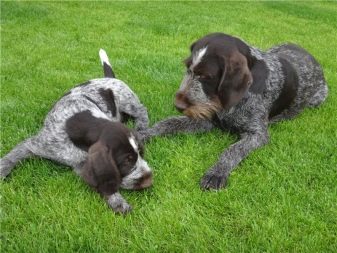

How to choose a puppy?
To choose a purebred puppy Drathaar, you need to go to the breeder with a photo, clear ideas about the breed standard. It is even better to invite a specialist who needs just one glance to understand how the puppy was kept, whether he is healthy, how active he is and whether he is suitable for training on a specific type of prey.
Appearance of puppies of a German Pointing Dog is quite original. Toddlers have a big head, a typical body for babies and a guilty look. Sometimes it even seems sad, the forehead is slightly elongated, the paws seem large, but in general his physique is proportional. By 1.5 months, puppies quickly gain weight, and in some individuals at the time of purchase it is from 6 to 10 kg.
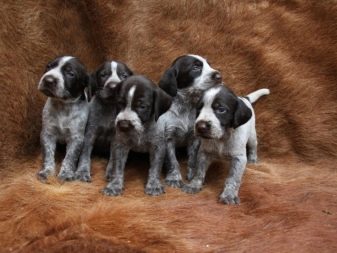
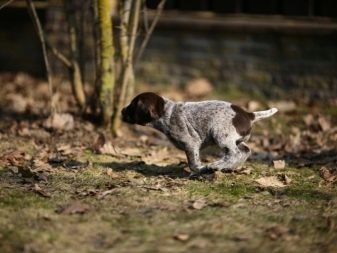
In our country, purebred individuals are registered about 800, but over the year the population increases only slightly. When choosing a baby, you need to pay attention to a number of factors, starting with the pedigree of the parents. The documents should have three marks on passing the tests, rated in points. The more points, the better, exhibition diplomas with excellent marks are also welcome.
Puppies are usually taken from the kennel when they are 45 days old. At the same time, the baby he likes should be active, his coat should shine, his eyes should be clean, his ears should be pink. You can not take babies who have secretions under the eyes, swollen belly, dandruff detected, back failure. In addition, you should not buy a puppy with sticky hair, which indicates its poor content and doubtful quality care.
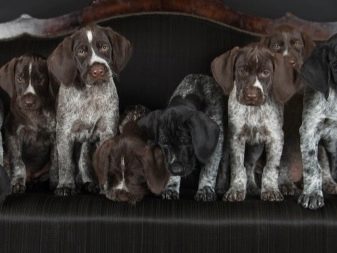
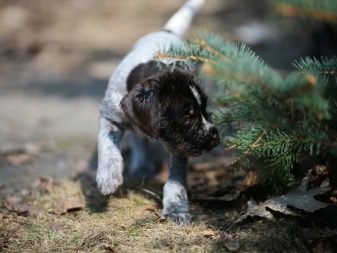
What to feed?
The nutritional plan for drathaara may vary. For example, it can be natural food, granular food, or a reasonable combination thereof. However, whatever the type of nutritious diet, in one meal there should not be both ready and dry food at the same time. As for the "drying", such a food is more convenient, because it does not need to be cooked. It is enough to choose from a series of holiviks or premium feeds.
It should contain a lot of natural meat, which is usually indicated on the package. Cheap feed is made from meat flour, in which at best there are offal or chopped hooves. Given that there is nothing useful in them, it is undesirable to take them for your pet.
As a rule, dogs that feed on cheap feeds for a long time are prone to liver disease and an upset digestive system.
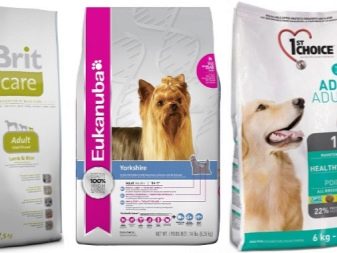
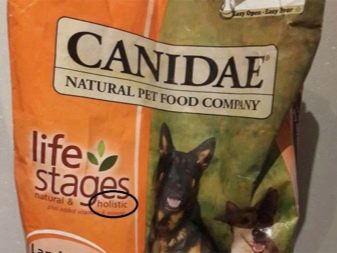
It is impossible to buy food by weight for the reason that after opening a large package it begins to oxidize. The more he will be on the store counter, the worse will be its quality, as well as freshness. The best solution is to choose a small package of a granular product for active wire-haired dogs. At the same time, taking the same food every time is undesirable, because the animal needs variety in food.
Besides, feed, unlike natural food, requires less per feed, since this product is concentrated. However, it is balanced, it contains vitamins and nutrients. When buying such a product, you need to pay attention to the age category for which it is designed. In addition to him, it is necessary to provide the dog with constant access to fresh water, and therefore a bowl of water should be in the kitchen constantly.
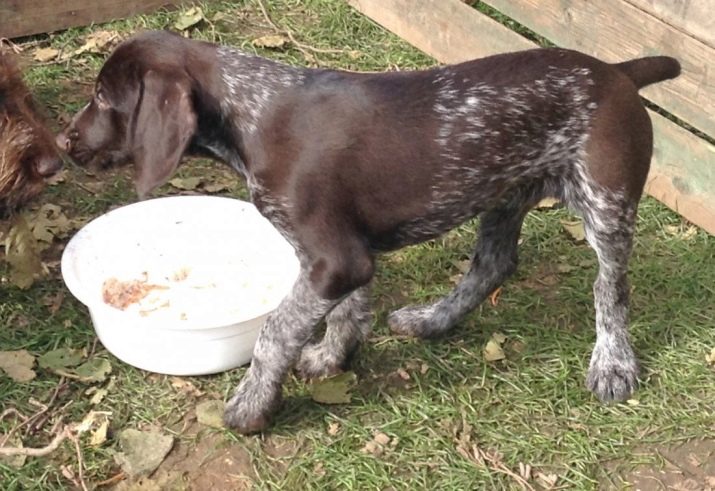
If you decide to feed the animal with natural food, we must not forget that it should be saturated with vitamins and minerals. The menu should include products such as lean meats, seasonal vegetables, kefir, cottage cheese. In addition, you need to regularly feed your pet buckwheat, rice and oatmeal. At least once a week, the dog needs to be given eggs.
Puppies need to be fed more often than adult dogs. As a rule, after their purchase, babies are fed about 4-5 times a day. As they grow older, the animal is fed less often, gradually reducing the number of meals and increasing the amount of food consumed. It is better to feed your pet at the same hours in the morning and evening. If the puppy is fed “drying”, the granules are first soaked so that they do not harm the formation of the teeth and do not hurt the puppy.
The daily feed rate is calculated based on the weight and age of the pet. It is divided by the number of feedings.
With ready-made feed, this is easy, as manufacturers indicate the recommended dosage on the product packaging. Natural food is selected so that, along with cereals and vegetables, the dog eats meat every day.


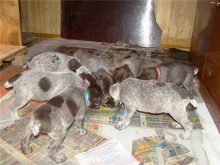
Veins, cartilage, and also a scar necessary for the formation of canine joints should be in the nutritious diet of young individuals. In addition, it will be necessary to provide the pet with vitamin complexes, which are selected not only based on the age of the animal, but also taking into account its health status. It is impossible to overfeed a hunting gundog, as excess weight in some cases can cause systemic diseases.
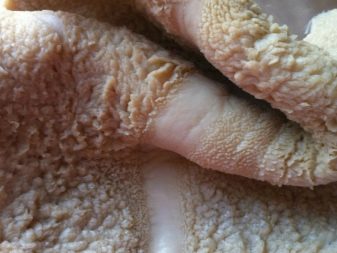
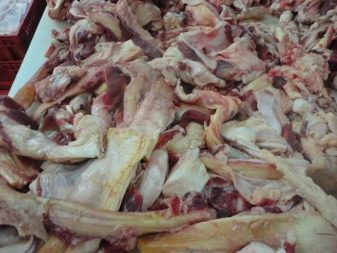
The list of prohibited foods that are contraindicated for these dogs include any sweets, spicy and smoked foods, fried and raw sausages, sausages, pickles and tubular bones.Dogs should not be fed before training or physical activity. You can not treat them with food from your table or put their food in plates from which family members eat. The animals should have their own dishes, and there should be three bowls: for liquid, food, and “sour milk”.

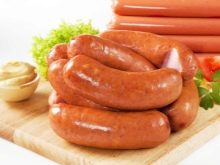
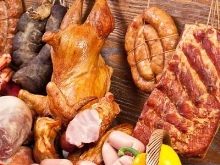
How to care?
Pet care will be in compliance with basic hygiene and general rules that are followed for all types of dogs. For example, this is regular care for hair, teeth, claws, ears and eyes. In addition, it is necessary from an early age to provide the pet with frequent examinations by a specialist, timely administration of the vaccine and antiparasitic treatment. It is important to show an animal to a specialist not only when it is sick, but also for prevention.
As for the care of a fur coat, it will not be difficult due to the structure and length of the coat. If other dogs have to comb out dead hair for a long time for normal new growth, as well as rid it of tangle, here none of this is needed.
Even during molting, which is usually twice a year, drathaar does not drop too much hair. If the dog lives in an apartment with dry and warm air, molting can last almost constantly.
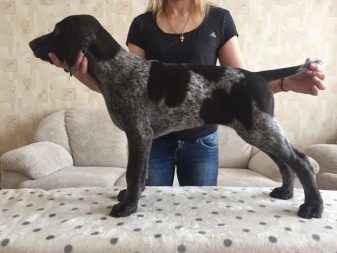
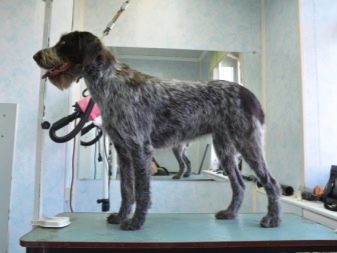
In order for his coat to be updated in a timely manner, the breeder needs to comb the pet with a special comb no more than once a week. During molting, the multiplicity of procedures must be increased to two times a week. Considering that all combs are not suitable for this dog, it is necessary to buy an option with metal teeth, choosing an accessory for grooming taking into account the size of the dog, the length of its coat and its density. If the comb is not picked up correctly in the store, this will increase the time for combing dead hair and can make the procedure painful.
They rarely bathe drathaars (mainly once every six months). However, if the dog returned from hunting or walking too dirty, you can’t do without washing. Breeders should take into account such a feature as the loss of stiffness of a fur coat and its natural qualities with frequent bathing with zoo shampoo. If desired, the pet himself never refuses to splash in the open water.

The ears of the dog need to be inspected constantly, as they get dirty, ridding the shell of sulfur. If the owner detects inflammation or an unpleasant odor or liquid in these areas, the dog should be taken to the veterinarian immediately. It is also necessary to do eye hygiene to prevent the possibility of clogging and inflammation. About once a week they are wiped with a moist cotton pad soaked in a weak solution of tea or chamomile.
After walking, you need to wipe and examine the dog's paws for wounds, splintering and cracks. If the paw pads are covered with cracks, this indicates a lack of fat, and therefore it is necessary to include vegetable oil in the nutritional diet.
In addition, cracked pads should also be lubricated with vegetable oil. Once a month, it is necessary to treat the animal with antiparasitic agents against fleas and ticks.
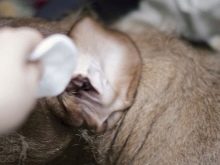
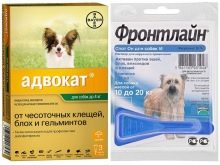
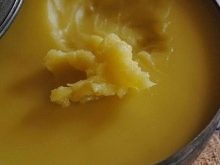
Parenting and training
As practice shows, the sooner the owner starts training the puppy, the better and faster the pet is trained. To memorize the simplest commands, the puppy needs no more than 2-3 trainings. The commands “sit”, “voice”, “lie”, “stand” and “cannot” the pet remembers instantly. He does not need to constantly consolidate the acquired skills, because the dog remembers these commands all his life.
Drathaaras can please their masters with presents in the form of rats or field rodents. Their mentor must be firm and serious in education. However, there can be no talk of any abuse of an authoritarian style of communication with a dog.
The pet feels very subtly where and when the owner shows weakness, and therefore can quickly seize the initiative in its clutches, starting to manipulate its owner.
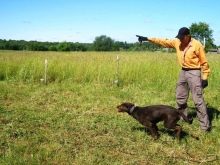

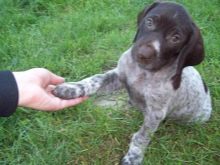
Courage to a dog is instilled with cheating, encouraging the puppy’s courage in training, his fear of shots and the type of prey, no matter how large its size. The baby remembers the smells of gunpowder and a volley of weapons on a hunt, away from public places and civilization. At the initial stage of training, the puppy should hear shots at a distance of about 200 m from him. If they do not scare him, the distance between the pet and the shot is gradually reduced.
The first training is best done under the guidance of a dog handler or huntsman. Often, the course includes open water swimming classes. Since some puppies are afraid of water from childhood, swimming training should be gradual, beaten by some game.
Monotony in training is unacceptable, as is rough handling. In such cases, the pet loses respect for its owner and ceases to see his idol in him.
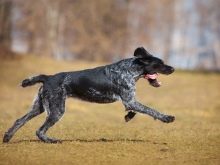
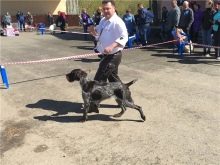
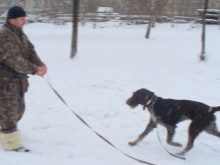
Lessons should be combined with dashes, games and quick-witted tasks. Teach you how to wear puppy items at 5 months. He is ready for porting when he learns to immediately and correctly respond to the masterful voice of the owner. In the first training lessons, a stuffed bird is used, which the dog must learn to bring at the request of the owner.
On average, a pet should bring about four types of prey to its owner. At the same time, the technique of training can be presented in the form of an imitation of hunting. Here the dog learns perseverance, acceptance of the stance, as well as the expectation of the command of its owner. It is good if, from childhood, pets are taught to hunt not only for waterfowl, but also for pheasant and hare.
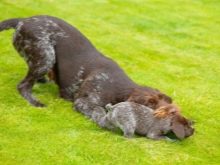

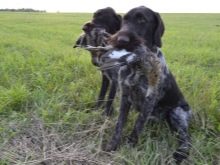
About the Drathaar breed, see below.
